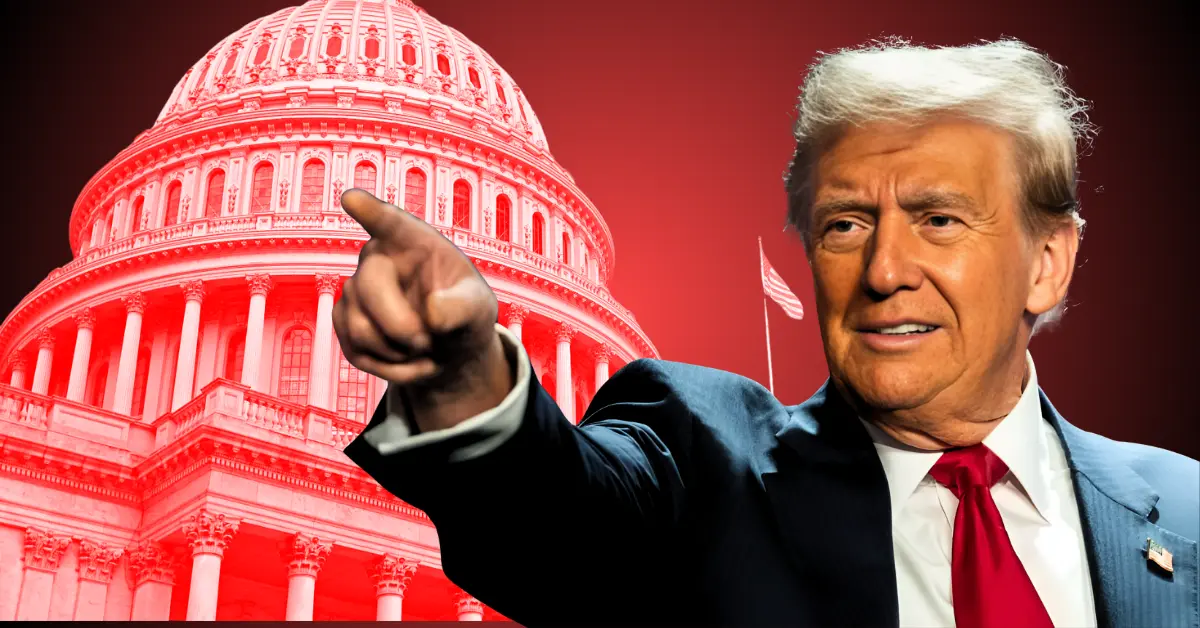The “One Big Beautiful Bill Act” of 2025 has ignited a firestorm of debate across the United States, reflecting the nation’s deep political divisions. This sweeping legislation, championed by President Donald Trump, represents a bold attempt to reshape the country’s economic and social policies. However, its narrow passage in the Senate and the intense opposition it has faced highlight the challenges of enacting such transformative legislation in a polarized political climate.
The bill’s journey through the Senate was anything but smooth. The marathon voting session and the tie-breaking vote by Vice President JD Vance underscore the intense partisan battles that have come to define American politics. The 51-50 vote, with Republicans holding a razor-thin majority, demonstrates the fragile nature of the bill’s support and the significant opposition it faces from Democrats. The bill’s passage was not guaranteed until the last moment, with Senator Lisa Murkowski’s flip providing the crucial vote needed for its approval. This internal dissent within the Republican party highlights the complexities of uniting different factions behind a single piece of legislation.
The “One Big Beautiful Bill Act” is a comprehensive package that touches on various aspects of the American economy and society. Its key provisions include extending existing tax cuts, increasing spending on border security, defense, and energy production, and proposing cuts to healthcare and nutrition programs. The tax cuts, primarily benefiting corporations and high-income earners, are set to be extended through at least 2028. This extension is expected to stimulate economic activity and investment, according to supporters of the bill. However, critics argue that these cuts will exacerbate income inequality and increase the national debt.
The increased spending provisions of the bill are equally contentious. The legislation allocates substantial funds to border security, including the construction of additional border walls, and defense, including the modernization of military equipment. These provisions are aimed at addressing some of President Trump’s key campaign promises. However, the bill also proposes cuts to healthcare and nutrition programs to partially offset the costs of the tax cuts and spending increases. The specific details of these cuts remain a point of contention, with Democrats arguing that they will undermine crucial social programs.
The Senate vote on the “One Big Beautiful Bill Act” was marked by dramatic moments and intense political maneuvering. Democrats employed various tactics to delay the vote, including demanding that the 940-page bill be read aloud in its entirety. Senator Chuck Schumer, the Minority Leader, criticized Republicans for supporting the bill out of fear of President Trump, referencing Senator Murkowski’s earlier comments about GOP lawmakers being afraid to cross the president. This criticism highlights the complex political dynamics within the Republican party and the challenges of uniting different factions behind a single piece of legislation.
The bill’s passage in the Senate has elicited strong reactions from across the political spectrum. The Trump administration hailed the bill’s passage as a “resounding victory” for American workers, farmers, and small businesses. They emphasized the potential for economic growth and job creation. However, Democrats condemned the bill as a giveaway to the wealthy and a threat to essential social programs. They vowed to continue fighting against its enactment in the House. Economists and analysts have offered mixed assessments of the bill’s potential impact. Supporters argue that the tax cuts will stimulate economic activity and investment, while critics warn that they will exacerbate income inequality and increase the national debt.
The bill now faces a crucial test in the House of Representatives. Speaker Mike Johnson faces the challenge of uniting his party behind the bill, as divisions exist within the House Republican caucus. The House may propose amendments to the bill, which would require further negotiations with the Senate. The Trump administration has expressed a desire to have the bill passed by July 4th, adding pressure on lawmakers to act quickly. However, the bill’s future remains uncertain, as it faces significant hurdles in the House.
Adding a layer of complexity to the political landscape, a public feud erupted between President Trump and tech mogul Elon Musk. This dispute reportedly stemmed from Trump’s concerns about Musk’s subsidies and Musk’s criticism of the “One Big Beautiful Bill Act.” The feud underscores the growing tensions between the tech industry and the Trump administration and could potentially influence the bill’s prospects in the House.
The “One Big Beautiful Bill Act” represents a pivotal moment in American politics. Its narrow passage in the Senate highlights the deep divisions within the country and the challenges of governing in a polarized environment. Whether the bill will ultimately become law remains to be seen, as it faces significant hurdles in the House of Representatives. Regardless of its fate, the “One Big Beautiful Bill Act” will undoubtedly have a lasting impact on the American economy, social programs, and political landscape. The coming weeks promise to be a critical period as the House debates the bill and the nation grapples with its potential consequences. The bill’s journey through Congress serves as a microcosm of the broader political and social divisions that define the United States in 2025.





